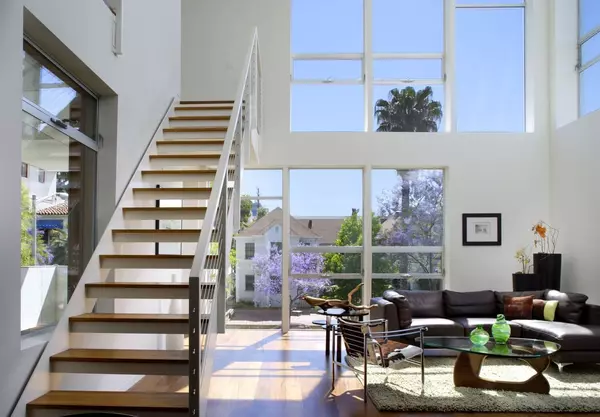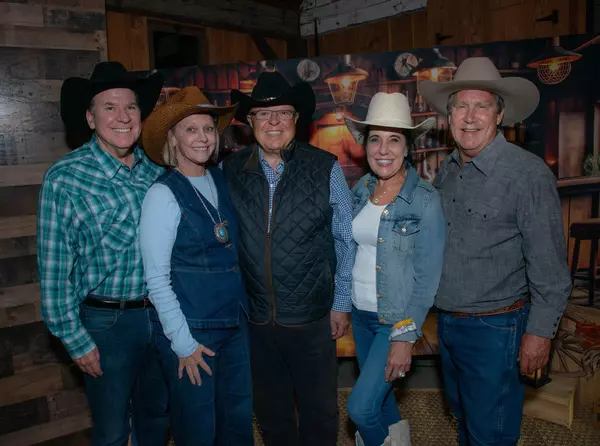Midway Rising’s $3.9B plan for San Diego’s sports arena site advances
Three years in the making, the Midway Rising project seeking to redevelop San Diego’s 49.2-acre sports arena site with thousands of apartments, a replacement arena and new shops is nearing a climactic decision point, even as proposed lease terms with the city remain undisclosed.
Thursday, the city of San Diego’s Planning Commission voted unanimously to recommend for City Council adoption a sweeping package of project land-use documents. The package includes the Midway Rising Specific Plan, the project’s environmental impact report, a general plan amendment, a community plan amendment and a rezone of the area to residential mixed-use.
The commission’s recommendation came with the caveat, however, that the associated development agreement is modified to require completion of transit improvements — namely a reconfiguration of Sports Arena Boulevard to include dedicated bus lanes — during the first phase of development.
“I agree with several of the speakers that have said that this project is going to join Petco Park, Liberty Station, and I’m going to add in SDSU West, as iconic projects that are going to greatly improve both the sites of the development and also anchor transformation of the surrounding neighborhoods. Leaving this neighborhood as is is unacceptable,” said commission member Matthew Boomhower, who made the motion to recommend approval. “I also do have some concerns about the transit connections to the Old Town Transit Center. I think these are going to be alleviated with the express bus lanes, but I think those should be included in phase one.”
The vote advances the land-use documents for final consideration by the City Council later this year.
A lease agreement for the property is still under wraps. The deal terms will be made public ahead of a hearing of San Diego’s Economic Development and Intergovernmental Relations Committee, which could take place as soon as next month.
“We’re thrilled to earn the Planning Commission’s unanimous recommendation of approval and to have the opportunity to present our project before City Council for final consideration,” Midway Rising Project Director Shelby Jordan II said in a statement. “San Diegans deserve a new landmark entertainment destination and a more vibrant Midway neighborhood, and if approved, we look forward to working in partnership with the city to advance the transit-oriented features of our project and bring the vision put forward in the Midway Community Plan to life.”
San Diego City Council members selected Midway Rising to lease and redevelop its real estate at 3220, 3240, 3250 and 3500 Sports Arena Blvd. in September 2022. The decision was based on the development team’s commitment to construct 2,000 residential units for households earning 80% or less of the area median income, or what’s referred to as affordable housing in state law.
Midway Rising is composed of market-rate housing developer Zephyr, affordable housing builder Chelsea Investment Corp., and sports-and-entertainment venue operator Legends. The Kroenke Group, a subsidiary of billionaire Stan Kroenke’s real estate firm, is the entity’s lead investor and limited partner.
The Midway Rising Specific Plan calls for 4,254 total residential units, a 16,000-seat replacement arena, 130,000 square feet of commercial space, 8.1 acres of parks, and another 6.4 acres of plazas and public space on 49.2 acres of land.
The project cost is estimated at $3.9 billion.
The development proposal includes 105-foot-tall residential buildings and a 165-foot-tall entertainment center, although the specific plan is written to allow for buildings as tall as 250 feet on 10% of the site.

The development is anticipated to be built in two phases over a 10-year period, starting with the eastern portion of the site, according to the environmental analysis. The initial phase includes a new, 380,550-square-foot entertainment center, 90,888 square feet of retail, and the nearly 3-acre The Square park. The first phase also includes 875 residential units in buildings east of a new street called Frontier Drive.
Building heights were a topic of discussion Thursday. Several comments submitted by the public in advance of the meeting framed the 250-foot-tall allowance as a bait-and-switch move by the developer.
“The Midway Rising project is destined to be the latest in a long line of San Diego real estate fiascos that enrich special interests, drain civic resources, and cheat the public,” Aileen Teague wrote in her comment letter. “We were promised that all buildings would be lower than 100 feet. Now one building will be 250 feet high and all of it luxury housing.”
Diego Velasco, a consultant on the specific plan, told the commission that the developers do not expect to erect any residential buildings taller than 105 feet, but that the plan’s height provision is meant to allow for flexibility going forward.
Traffic concerns received the most attention.
Planning commissioners agreed that the prospect of thousands of residential units far outweigh, in significance, the project’s downsides, but they sympathized with people critical of Midway Rising’s transportation plan.
“I recognize and understand the concerns of the community, especially those in neighboring communities who will see this every day, drive past it every day,” commission member Daniel Reeves said. “I also recognize the state of the community, the drastic need to do something different here.”
The Midway Rising plan calls for two new public streets — Frontier Drive and Kemper Street — to allow traffic to cross the current, land-locked sports arena site between Kurtz Street to the north and Sports Arena Boulevard to the south.
The transportation plan includes changes to off-site roads and intersections, and the addition of a bus stop on Sports Arena Boulevard. Sports Arena Boulevard will also be reconfigured with four lanes for cars — compared to six lanes currently — and two bus-only lanes. The reconfiguration includes a wide promenade with a multi-use path fronting the project site. However, the dedicated-transit-lane reconfiguration is identified as a phase-two project in the environmental impact report.
Planning Commission members viewed the phase-two implementation plan as problematic. They anticipate the lanes will be needed immediately to accommodate bus and shuttle connections from the Old Town Transit Center to the new arena, especially given the limited supply of parking.
“Given that the entertainment center is happening in phase one, I think it’s going to be pertinent to have that rapid shuttle or bus connection to the trolley station, if you’re talking about 2,100 parking spaces for the venue out of the (7,040 total spaces) and this is a 16,000-seat venue,” commission member Jeana Renger said. “I feel like there’s a huge delta, and so ridership of the trolley and transit is going to be totally necessary, right?”
For just the arena, the projected vehicle miles traveled in the region is expected to grow by 839,145 miles per year, according to the project’s environmental impact report.
In total, the project will result in 22,514 additional daily car trips at build-out for all use types — entertainment, commercial and residential — during a typical sports event or concert, a local mobility analysis prepared by engineering consulting firm Kimley Horn found.
Car trips and vehicle miles traveled are distinct measurements. A car trip is a single journey taken by a driver and contributes to the overall vehicle miles traveled, which is the sum of the distances traveled by all vehicles in a given area. Vehicle miles traveled, or VMT, is the standard for measuring environmental impacts under California’s Environmental Quality Act.
Only the vehicle miles traveled associated with the project’s 40,000 square feet of regionally serving restaurant space is considered a significant and unavoidable traffic impact in the environmental analysis. To mitigate the impact, the Midway Rising development team is required to provide shuttle service between Frontier Drive and the Old Town Transit Center daily, between noon and 10 p.m., as soon as the first eatery opens.
The Planning Commission’s recommendation to push the dedicated bus lanes to the first phase of development seems unlikely to appease those most concerned about future traffic congestion.
“We have seen for the last five years the abject failure of any plan that involves public transit or bicycling,” Paul Krueger said during the public comment portion of the meeting. “When you talk about a walkable and rollable community, you’re talking about the area in which these people will live. You are ignoring, if you refuse to discuss and acknowledge the transportation problems, tens of thousands of San Diegans who need to transit through this.”
More than 65 people submitted comment letters in opposition to the project in advance of Thursday’s meeting. At the hearing, however, nearly two dozen people spoke in favor of the project, with most of the support coming from partner organizations and labor groups. The union support dates to 2022, when Midway Rising agreed to a project labor agreement with the Building and Trades Council.
The Planning Commission voted 6-0. Commission member Ted Miyahara was absent.
Categories
Recent Posts










GET MORE INFORMATION


